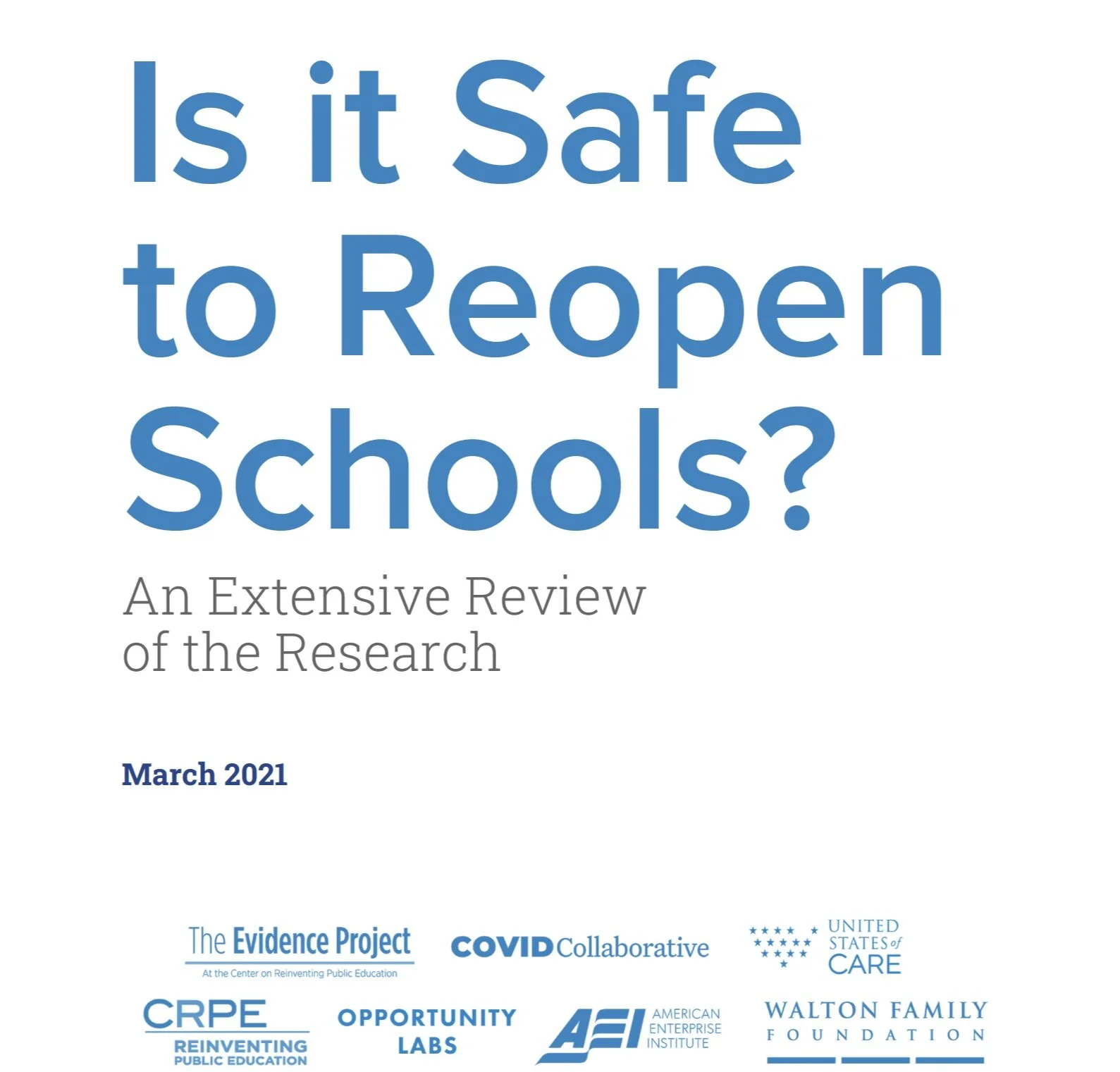Is it Safe to Reopen Schools? An Extensive Review of the Research
More than 50 million students have stayed home in the last year, as school systems scrambled to support remote or hybrid learning platforms. One year later, many school districts remain closed to in-person instruction as districts continue to debate how to reopen safely and responsibly.
A new report, Is it Safe to Reopen Schools? An Extensive Review of the Research, from the COVID Collaborative, United States of Care, the Walton Family Foundation, Opportunity Labs, CRPE's Evidence Project, and AEI summarizes more than 130 studies that show the physical, academic, and emotional toll of school closures will have a significant negative impact on children for decades to come. The report highlights key findings around risks for children, transmissibility concerns, and the impact of school reopenings on community spread — including a new analysis of data related to learning loss, student engagement, and absenteeism with a focus on the disproportionate harm on students of color.
News Coverage
Dr Sanjay Gupta: A roadmap for in-person school emerges. CNN, Sanjay Gupta
First look: New report urges reopening of schools. Axios, Jennifer A. Kingson.
New Analysis Seeks to Guide Educators on Reopening Schools, WSJ
Review of 130 studies favors reopening schools with safety measures. K-12 Dive, Kara Arundel
Former Bush official argues that Iowa schools were right to reopen early. Axios, Linh Ta.
Growing Evidence Indicates It Is Safe to Reopen School Buildings. Ed Surge, Emily Tate.
Keeping classrooms closed during pandemic more detrimental to children’s health than thought, report says. Fox News, Mark Meredith
How the Trump Administration’s Data Failure Has Kept Schools Closed. US News, Lauren Camera.
Analysis of more than 100 studies suggests schools can safely reopen. CNN, Elizabeth Stuart.
Topline findings include:
The vast majority of research from around the world suggests that children comprise a small proportion of diagnosed COVID-19 cases, develop less severe illness, and have lower mortality rates.
Studies suggest attending school does not increase risk to children, particularly if health protocols are followed such as masking.
Evidence points to schools mirroring the transmission rates of their communities. Schools themselves do not appear to drive community transmission.
Protective measures such as mask wearing, physically distancing, increasing hygiene regimens, and improving ventilation add layers of protection that can mitigate risks for students and school staff.
COVID-19 vaccinations, symptomatic testing and isolating potentially infected individuals, and asymptomatic COVID-19 screening tests offer additional preventative benefits.Any public health benefit gained from school closures must be weighed against the significant—and potentially lasting—costs imposed on individual students and society as a whole.
We’ve likely overestimated the protective health benefits of school closures and underestimated the costs for children. A growing body of research suggests children who are not in school face greater health risks due to missed health screenings, food insecurity, and mental health challenges.Severe learning loss for many children, particularly children of color, will lead to lower educational attainment and lower future earnings.
Each study is summarized to allow state and local leaders to interrogate the data themselves in order to develop their own conclusions. Evaluating science is a process, not a single event. Leaders need to continuously seek out and evaluate new research and adapt their strategies. We hope this new report provides a helpful launching point for that work.

